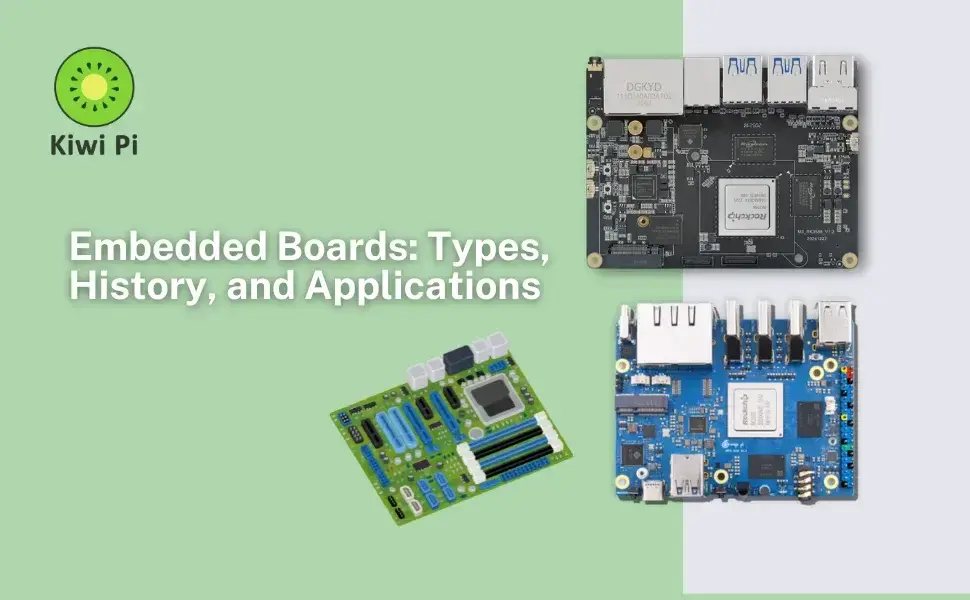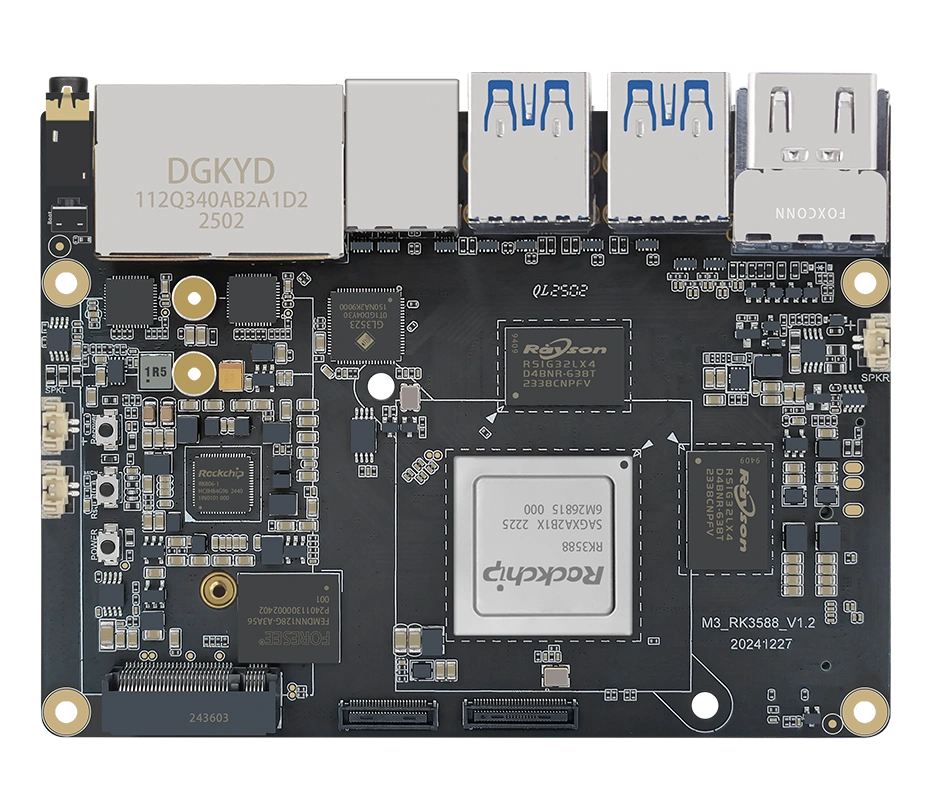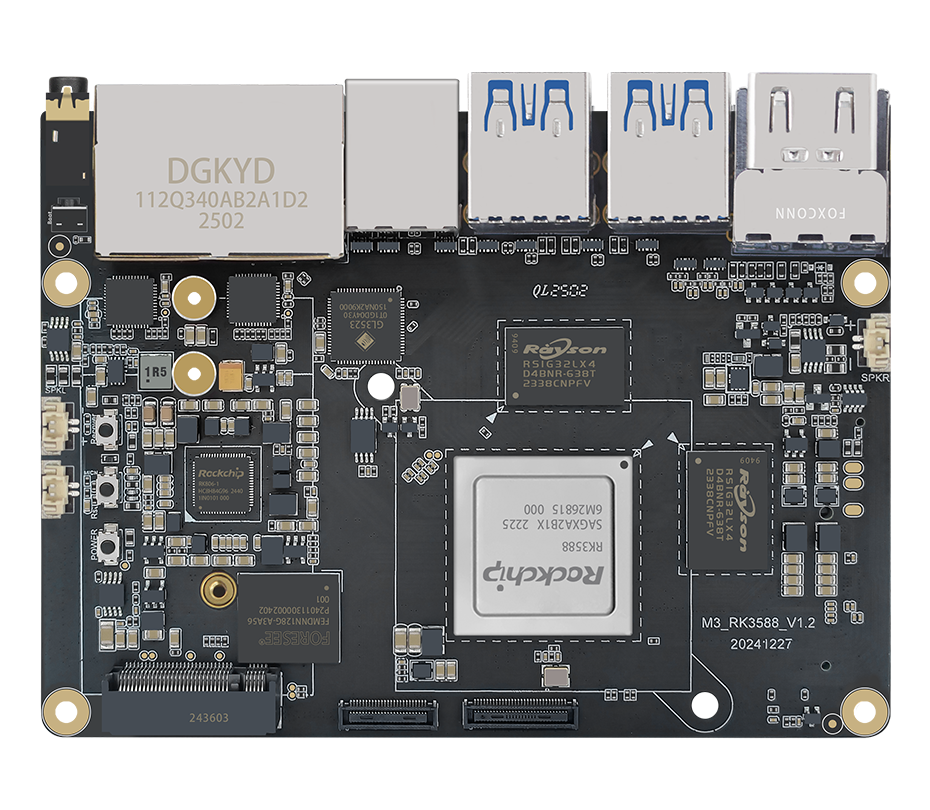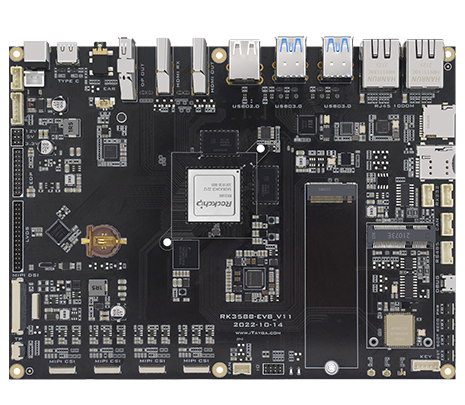
Articles
Understanding Embedded Boards: Types, History & Applications
Introduction
Embedded systems are small computers that are used in many things around us, like household gadgets and factory machines. They use special boards called embedded boards, EBCs, and SBCs. These boards have the important parts needed to do specific jobs, and they are small and efficient. In this article, we will learn about different types of embedded boards, their history, and how they are used.
As we progress, you'll get a clear understanding of the differences between embedded boards, embedded board computers, and embedded SBC boards, alongside their evolving role in today's tech-driven world.

What are Embedded Boards?
Embedded boards are small circuit boards made to do specific jobs inside larger systems. They are small, use little power, and can work in many different places, like factories or gadgets we use every day. These systems are designed to do one main thing and often don't need people to control them, which makes them good for automatic tasks.
Components and Features of Embedded Boards
Embedded boards typically consist of:
Processor (CPU): The brain of the system, often a low-power microprocessor or microcontroller.
Memory: RAM and flash storage for temporary and permanent data storage.
Input/Output Interfaces: Ports such as serial, USB, HDMI, GPIO, etc., for communication with external devices.
Power Supply: Embedded systems typically have specific power requirements, often operating on low voltage.
Types of Embedded Boards
Embedded boards are classified based on their architecture, size, and purpose. Some of the common types include:
Microcontroller-based Boards: These boards use microcontrollers (MCUs) and are designed for simple tasks.
Microprocessor-based Boards: These boards utilize more powerful microprocessors, offering more complex functions.
System-on-Module (SoM) Boards: These boards integrate all the essential components on a single module and are designed to be integrated into larger systems.
Single-Board Computers (SBCs): A full computer built on a single board, often with general-purpose computing features, but in a compact and embedded form.

Embedded Board Computers (EBCs): Key Features and Uses
Embedded board computers (EBCs) are special computer units. They mix the features of small embedded boards with more power. They usually have better features, faster processing, more memory, and better communication options.
Key Features of Embedded Board Computers
Higher Performance: Embedded board computers typically use advanced microprocessors and offer significantly better processing power than basic embedded boards.
Full Operating System Support: Unlike simpler embedded systems, which may operate on limited firmware, embedded board computers usually run on full operating systems like Linux, Windows, or Android.
Expansion Capabilities: Embedded board computers can support external peripherals such as additional storage, display systems, and networking components.
Connectivity: EBCs come with multiple connectivity options such as Wi-Fi, Ethernet, USB, and more for seamless integration into larger networks or systems.
Applications of Embedded Board Computers
EBCs find applications in several industries due to their balance between power and size. Some common areas where EBCs are used include:
Industrial Automation: For controlling robots, sensors, and industrial equipment.
IoT Devices: Embedded board computers form the backbone of many Internet of Things (IoT) devices that require constant data collection and processing.
Automotive Systems: EBCs manage infotainment systems, navigation, and real-time vehicle data analysis.
Medical Devices: Devices like medical imaging machines, diagnostic tools, and patient monitoring systems often rely on embedded board computers.
Single-Board Computers (SBCs): A Closer Look
Single-Board Computers (SBCs) are small computers on one circuit board. They are tiny and can do many jobs without extra parts. People like SBCs because they are cheap, small, and use open-source software. They can be used for work or fun.
Popular SBCs in the Market
Some of the most popular SBCs include:
Raspberry Pi: A widely known and inexpensive SBC used in education, DIY projects, and commercial applications.
Kiwi Pi: It's our range of single-board computers, featuring Rockchip RK3588 and RK3588S processors.
Arduino: While technically a microcontroller, Arduino-based boards offer SBC-like features and are commonly used in prototyping and hobbyist projects.
BeagleBone Black: Known for its performance and versatility, often used in embedded systems.

Advantages of SBCs
Compact Design: SBCs offer a complete computing solution in a small form factor.
Affordability: SBCs like Raspberry Pi are inexpensive, making them accessible for a wide range of applications.
Flexibility: They support multiple OS options, including Linux and Android, and can run applications for development, media, or industrial control.
Evolution of Embedded Boards: A Historical Overview
The development of embedded systems and embedded boards is intertwined with the rise of computing technology over the last few decades.
Early Days: The Birth of Embedded Systems
Back in the 1970s, companies started putting tiny computers called microprocessors into machines to help run just one part of them. The first big step was creating microcontrollers, which only did one job inside these machines.
1980s-1990s: Expansion and Standardization
During this time, embedded boards changed a lot. The release of the IBM PC and better microprocessors made embedded systems stronger and able to run complete programs. Ready-made development boards like Intel and ARM helped new ideas in embedded technology grow.
2000s and Beyond: Rise of SBCs and IoT
Thanks to better computers, bigger networks, and smaller sizes, single-board computers (SBCs) became very useful. The Internet of Things (IoT) and Linux systems like Ubuntu for ARM chips helped these small computers grow quickly. Today, embedded systems are everywhere, found in robots, smart homes, and many other devices.
Comparison of Embedded Board Types
| Feature | Embedded Board | Embedded Board Computer (EBC) | Single-Board Computer (SBC) |
|---|---|---|---|
| Processing Power | Low to moderate | Moderate to high | Moderate to high |
| Operating System Support | Limited/No OS | Full OS (Linux, Windows) | Full OS (Linux, Windows) |
| Size | Small to medium | Medium | Compact |
| Connectivity Options | Basic | Advanced (Wi-Fi, Ethernet, USB) | Advanced (Wi-Fi, Ethernet) |
| Use Case | Dedicated tasks | Complex applications | General-purpose computing |
Applications of Embedded Boards
Embedded boards and their variants (EBCs and SBCs) find use across a wide range of industries. Some of the most significant applications include:
Consumer Electronics: From televisions to kitchen appliances, embedded boards power many consumer devices.
Medical Equipment: Embedded systems in diagnostic machines and monitoring systems.
Automotive: Used for engine control, infotainment systems, and advanced driver-assistance systems (ADAS).
Military and Aerospace: Embedded boards are critical for navigation, communication, and control systems.
Conclusion
Embedded boards, single-board computers (SBCs), or embedded board computers (EBCs) are small electronic devices used in many areas. They are small, use little power, and have special features. They are important in many fields like healthcare and smart devices.
As technology gets better, the differences between these types of boards will become less clear. Still, they will keep playing a big part in new electronic products, helping them work better and smarter.


